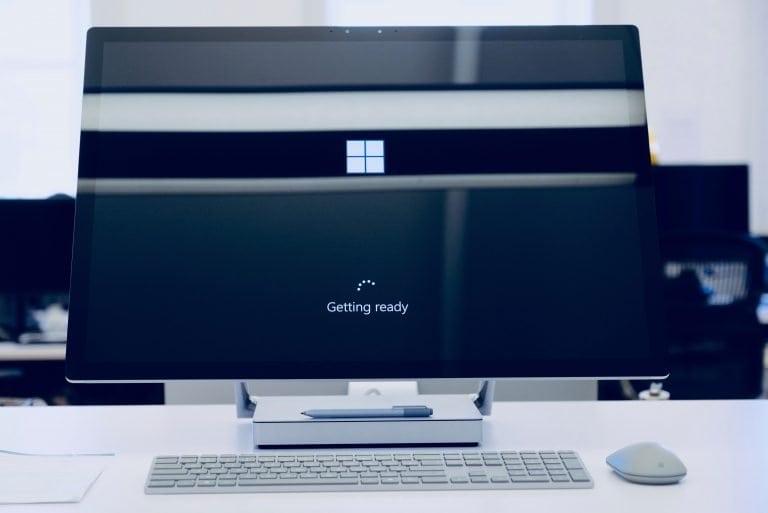
5 Tips on How to Upgrade to Windows 10 from Windows 7
Hitting the headlines this year was the announcement that as of January 14, 2020, Microsoft will no longer give continued support to Windows 7. Not only will that mean there are no more useability upgrades on the way, but there will be no security updates, either. If your business is one of the few still clinging to Windows 7, there’s not a whole lot of time left to migrate to Windows 10 before you face security consequences—now’s the time to bite the bullet and make the switch.
Why You Can’t Afford to Wait
When Windows 7 updates stop rolling out come January 2020, your system is going to become much more vulnerable to hackers, viruses, spyware, and ransomware. The longer you spend on the obsolete operating system, the worse the risk of a data breach becomes. Furthermore, your business will no longer be compliant with most cybersecurity regulations.
Even if you do insist on staying on Windows 7 and risking your protected data, the cost of continuing on the outdated OS is going to increase as time goes on. In 2020, you will have to pay $25 to per each device running Windows 7, but in 2022, that rate will jump up to $100 per device.
Microsoft experts and IT specialists alike agree that the best solution is to make the transition to Windows 10 before the end of this year. Now, as Windows 7 nears even closer to its End of Life, t’s more important than ever that you plan as efficiently as possible to conduct the Windows 10 rollout in a way that doesn’t inhibit your normal business output or put your secure information at risk. Careful planning is key to a smooth migration. Here are 5 tips that can help you make the transition to Windows 10 as quickly, efficiently, and safely as possible:
1. Strategize Your Migration Approach
Don’t start updating your devices without a proper strategy in order. Make a strategic plan for how you will implement the new operating system on each device. A quick upgrade is important, but the potential risks of downtime or lost data aren’t worth the risk of skipping over the planning stage. Most businesses choose to migrate their devices in phases, upgrading only a few systems at a time while keeping other systems operational to ensure business can go on as usual.
2. Carefully Review Your Contracts
See if your current hardware support contracts qualifies your business for upgrade support to Windows 10. If they do, then you should schedule the upgrade as soon as you can. If you have a larger IT infrastructure, then support contracts may offer you a little more time to complete the implementation of the upgrade into the coming year. However, even if this is the case, it’s still vital to start the upgrade as soon as possible.
3. Determine Your Hardware Compatibility
If your hardware is older or doesn’t have a support contract, it may not be compatible with Windows 10. Check with the manufacturer or an IT services company to determine compatibility. Most hardware is compatible; however, some specialized hardwares may run into issues. If your hardware is not Windows 10 compatible, you may need to replace certain equipment before undertaking a migration. Either way, you should fully inventorize your hardware so that you know what’s getting upgraded, what will become obsolete, and what new equipment you may need to purchase.
4. Arrange a Testing Phase
Before you start upgrading all your systems, you perform the upgrade on a few devices for testing. IT specialists and regular staff should both test these devices on the new OS and give feedback for how it works with your programs and applications. As potential challenges are identified, you can prepare for and prevent them before you upgrade every device.
5. Help Staff Get Comfortable with Windows 10
While many features of Windows 10 will be familiar to your staff, it’s important to train your staff to ensure they know about new features, how regular programs may be affected, and any other changes they should be aware of. It’s also wise to use this training as an opportunity to brush up your employees on security awareness to make sure they keep confidential data protected while using the new operating system. Managed services providers can offer several training resources to help your team get used to new features, follow best practices, and be as productive as possible on Windows 10.
Start Upgrading Now
Windows 10 is already a safer OS than Windows 7, and will continue to become safer as Windows 7 becomes obsolete in the coming year. Furthermore, Windows 10 is currently the most supported OS produced by Microsoft. If you still have systems on Windows 7, then now is the time to start seriously thinking about how you’re going to make the upgrade.
Luckily, you don’t have to do this upgrade alone. You can get top-notch Managed IT Services through Middleground Technologies, where we can help you organize a plan, test your devices, and make sure that your update goes as smoothly as possible.

